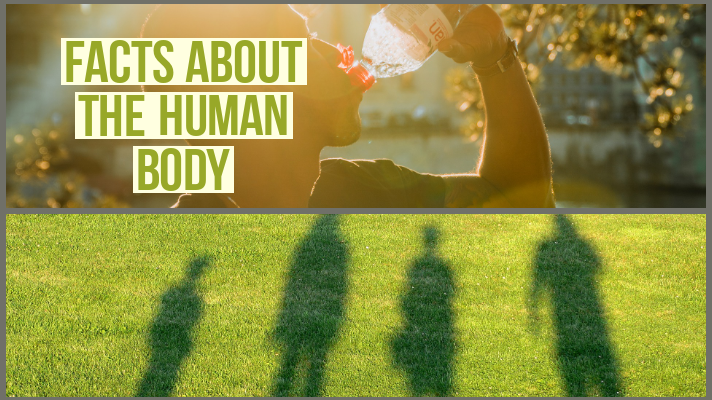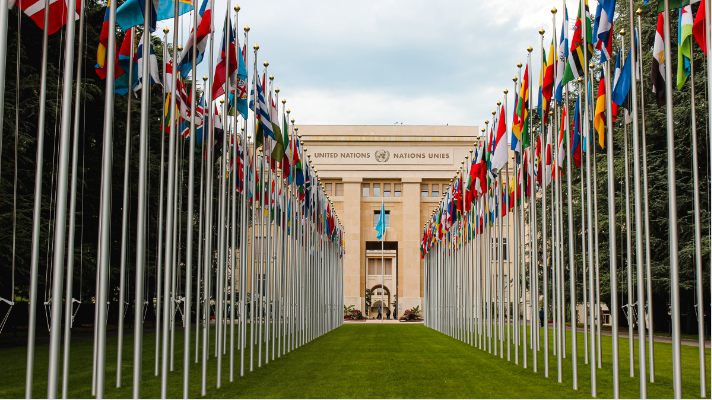facts about The human body
facts about The human body
The human body is a fantastically complicated machine made from millions of different parts, all packed tightly together beneath the skin. To understand how the body works, we need to look inside and see how the parts fit and work together to make us living, breathing, thinking human beings.
BUILDING A BODY
Just as a building is made from thousands of bricks stacked carefully together, the human body is constructed from simple parts that fit together in an organized way. Small, living units called cells are joined together much like bricks to form larger structures called tissues, which are used in turn to build organs and organ systems.
The human body is a fantastically complex machine containing 206 bones, 650 muscles, and 75 trillion parts called cells. Scientists have studied the body in greater detail than any object in history, yet many mysteries remain.
1. 30 million the number of new cells that will form in your body as you read this sentence.
2. The human body is a jigsaw made up of around 75 trillion microscopic pieces called cells.
3. Every part of your body is constructed from these tiny building blocks, from your eyelashes to your toenails.
4. The human body is made almost entirely from just a handful of simple chemical elements.
5. The average human cell is two-thirds the size of a smartphone pixel.
6. 10% of the skeleton is broken down and rebuilt every year. Inside a joint To help the two bones in this joint to move, their ends are coated with slippery cartilage and surrounded by a pool of fluid. Tough ligaments tie the bones together.
7 100 The number of times your body’s cells would wrap around Earth if laid out in a line.
8 There are 54 bones in the handsabout a quarter of the body’s total.
9 An adult skeleton contains more than 2 lbs (1 kg) of calcium.
10 Calcium is the most abundant metal in the human body.
11 Muscles allow us to walk, run, jump, and wiggle our fingers. They also move blood around the body and food through our intestines and allow us to speak.
12 More than 640 muscles are arranged in crisscrossing layers between the skin and bones of the skeleton.
13 Skin is waterproof, keeps out germs, and repairs itself. It filters out harmful rays in sunlight, gives you the sense of touch, and helps to control your body temperature.
14 Every cell in the human body needs a continual supply of fuel and oxygen in order to stay alive.
15 The stomach expands to as much as 70 times its empty volume when it fills up with food.
16 Just the thought or smell of food is enough to get digestive juices flowing in the mouth and stomach.
As soon as food enters the body, it’s mashed to a pulp and attacked by chemicals that begin to break it down.
17 4 hours the average time a large meal spends in the stomach.
18 6 pints (3 liters) the maximum 1½ internal volume of a full stomach.
19 33 tons the total weight of food processed by the intestines in an average lifetime.
20 60,000 miles (100,000 km) the total length of the blood vessels in the human body.
facts about The human body
Also Read : facts About mars planet :Unbelievable Facts
21 The heart and blood vessels make up the body’s circulatory system.
22 There are three main types of blood cells.
23 5 million the number of red blood cells in a drop of blood.
24 Every second, about 2 million of your red blood cells die and 2 million new ones are made.
25 In one year, the heart pumps out enough blood to fill an Olympic size swimming pool.
26 14,800 pints (7,000 liters) of blood passes through an average person’s heart every day.
27 As body fluids flow through the vessels of the lymphatic system, they are filtered through swellings called lymph nodes.
28 5 million the number of bacteria found on 0.15 sq in (1 sq centimeter) of skin.
29 7 million the number of white blood cells in one teaspoon of blood.
facts about The human body
30 450 gallons (1,700 liters) the amount of blood cleaned by the kidneys every day.
31 19 miles (30 km) the total length of filtering tubes inside one kidney.
32 Every minute, without you thinking about it or even noticing, your lungs take in about 15 breaths of air.
33 Oxygen is essential for life. Without it, the cells in your body would not be able to release the hidden energy trapped in food molecules.
34 When we’re out of breath, we breathe through the mouth as well as the nose.
35 The main airway to the lungs is called the windpipe, or trachea.
36 100 alveoli in one lung. mph (160 kph) the speed that air travels in a sneeze.
37 500 will breathe in during your life. million—the number of 100 alveoli in one lung.
38 Air contains tiny flecks of dust and germs that could damage our lungs.
39 The human nose can detect around 10,000 odors, but our mouths react to only five different tastes. These two senses combine in the brain to give the food we eat an infinite variety of flavors.
40 THE LONGEST CONFIRMED HUMAN LIFESPAN IS THAT OF JEANNE CALMENT OF FRANCE. SHE WAS BORN IN 1875 AND DIED IN 1997 AT THE AGE OF 122 YEARS, 164 DAYS.
41 Our bodies and brains are transformed as we grow up. The most dramatic changes happen in infancy and during the teenage years, but we continue changing throughout life.
42 If you unraveled all the DNA from every cell in your body, there would be enough to stretch to the Sun and back 400 times.
43 Each cell in your body contains a set of 46 chromosomes squashed into the cell nucleus (except red blood cells, which have no nuclei). Two special chromosomes —the X and Y chromosomes—determine whether a baby is a boy or a girl.
44 2.2 million the number of letters in the longest known gene.
45 YOU BREATHE IN ABOUT 21,000 PINTS (10,000 LITERS) OF AIR EVERY DAY. THAT’S ENOUGH TO FILL 1,000 BALLOONS.
46 Vision is the most important sense in humans. We gather more information through our eyes than through all our other senses combined.
47 Every second of every day, powerful chemicals called hormones course through your bloodstream. Hormones are made in your body and target specific organs, controlling the way they work.
48 The eyes open when the fetus is six months old, but it can only see light and dark.
49 8 ft 11 in (2.7 m) The height of Robert Wadlow, the tallest person in history, who suffered from gigantism—an excess of growth hormone.
50 The human tongue has around 10,000 taste buds, each containing up to 100 taste receptor cells.
51.BATS CAN DETECT SOUNDS 10 TIMES HIGHER THAN HUMAN EARS CAN, BUT THE HUMAN VOICE IS TOO DEEP FOR THEM TO HEAR.
52. 10 days the average lifespan of a taste bud.
facts about The human body
facts about The human body












